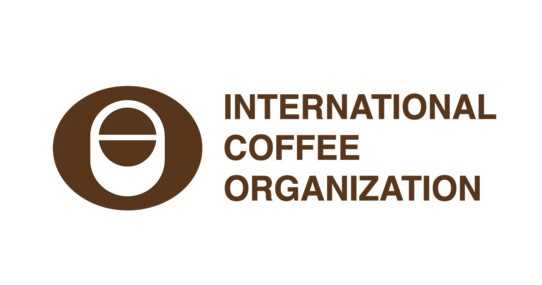LONDON, UK – In July 2020, the ICO composite indicator increased by 4.7% to an average of 103.66 US cents/lb, following three months of declines. Prices for all coffee groups rose in July 2020, though the largest month-on-month increase occurred for Brazilian Naturals, which grew by 5.8% to 97.96 US cents/lb.
Global exports in June 2020 amounted to 10.57 million bags, 5.3% lower than June 2019 while shipments in the first nine months of coffee year 2019/20 reached 95.36 million bags, 5.1% lower than the same period last year.
The majority of coffee continues to be exported as green coffee, accounting for 90.4% of total coffee shipped between October 2019 and June 2020. Soluble coffee shipments accounted for 9.1%, of the total, an increase of 1 percentage point from one year ago, while roasted coffee shipments represented just 0.5%. A 2.9% decrease in global production to 168.01 million bags has contributed to the lower volume of shipments.
After falling in each of the last three months, the monthly average of the ICO composite indicator rose by 4.7% to 103.66 US cents/lb in July 2020. The daily composite indicator reached a low of 98.59 US cents/lb on 10 July before climbing to 114.25 US cents/lb on the last day of the month. Strengthening of the Brazilian Real in the second half of the month supported prices in July as well as concerns over temporary tightness in supply.
Prices for all group indicators rose in July 2020. The largest increase occurred in the average price for Brazilian Naturals, which grew by 5.8% to 97.96 US cents/lb. Colombian Milds increased by 4.2% to 153.38 US cents/lb while Other Milds rose by 3.7% to 146.78 US cents/lb. As a result, the differential between Colombia Milds and Other Milds increased by 17% to an average of 6.60 US cents/lb. The monthly average Robusta price increased by 4.8% to 67.69 US cents/lb.
The average arbitrage in July, as measured on the New York and London futures markets, rose by 7.9% to 48.28 US cents/lb. Additionally, volatility of the ICO composite indicator price increased by 1.5 percentage points to 7.6%. The volatility for Colombian Milds and Other Milds both increased by 1.1 percentage points to 6.7% and 6.9%, respectively. Brazilian Naturals volatility rose by 2.8 percentage points to 11.5%, while the volatility for Robustas decreased by 0.3 percentage point to 6.3%.
Global coffee production in coffee year 2019/20 is estimated at 168.01 million bags, a decrease of 2.9% from 2018/19. Arabica output is estimated to fall by 5.4% to 95.37 million bags, due to a decline in production in seven of the ten largest Arabica producers, while Robusta production is estimated to increase by 0.5% to 72.63 million bags.
Global coffee consumption is estimated to rise by 0.3% to 168.49 million bags, which is below the average annual growth rate of 2.2% over the last two decades. Strong growth at the start of the season is expected to be offset by a global economic slowdown.
As a result, the ICO is predicting a deficit of 486,000 60kg bags for CY 2019/20, from a surplus of 1.85 million bags expected in its June report.
In June 2020, world coffee exports fell by 5.3% to 10.57 million bags compared to June 2019, due in part to lower production, reports the ICO. Shipments of Arabica fell by 10% to 6.42 million bags, but Robusta exports increased by 3% to 4.15 million bags compared to June 2019. Global exports in the first nine months of coffee year 2019/20 decreased by 5.1% to 95.36 million bags. Shipments of Other Milds shrank by 8.2% to 19.11 million bags in October 2019 to June 2020. Brazilian Naturals decreased by 7.8% to 28.84 million bags while Colombian Milds exports fell by 7.2% to 10.53 million bags in the first nine months of the coffee year. Robusta shipments reached 36.88 million bags, 0.4% lower than in October 2018 to July 2019.
In the first nine months of coffee year 2019/20, green coffee exports represented 90.4% of total exports, amounting to 86.2 million bags. This current trend is only slightly lower than that observed three decades ago, when green exports accounted for around 95% of total exports, indicating that much of the value addition remains in importing countries. Soluble coffee shipments accounted for 9.1%, of the total, an increase of 1 percentage point from one year ago, while roasted coffee shipments represented just 0.5%. Total exports of soluble coffee reached 8.64 million bags and roasted coffee exports reached 509,000 bags in the first nine months of coffee year 2019/20
In October 2019 to June 2020, Brazil shipped 26.48 million bags of green coffee, 9.5% lower than the same period one year ago, and accounted for around 30.7% of all green coffee shipments. Green coffee exports from Viet Nam reached 20.22 million bags in the first nine months of coffee year 2019/20, representing 23.5% of the total and making it the second largest exporter of green coffee. Colombia’s green coffee exports fell by 7.4% to 8.72 million bags and shipments from Honduras declined by 14.1% to 4.81 million bags. However, green exports from both Uganda and Indonesia rose, increasing by 20.6% to 3.79 million bags and by 30.2% to 3.37 million bags, respectively. The main destinations for green coffee were the United States, Germany, Italy, Belgium, and Japan in October 2018 to July 2019.
Mexico, Colombia, Viet Nam, Indonesia, and Brazil represent the five largest exporters of roasted coffee among coffee producing countries, accounting for 93.1% of total roasted coffee exports in the first nine months of coffee year 2019/20. Mexico shipped 161,000 bags of roasted coffee while Colombia exported 152,000 bags. Viet Nam’s exports of roasted coffee declined by 52.3% to 119,000 bags, and Brazil’s shipments of roasted coffee by 25.4% to 14,200 bags. However, Indonesia’s exports of roasted coffee more than tripled to 28,600 bags. The United States was the main destination for shipments of roasted coffee, accounting for around 45.7% of the total during the first nine months of 2019/20.
Brazil was the largest exporter of soluble coffee in October 2019 to June 2020, with shipments reaching 2.94 million bags, 1.8% lower than the same period one year ago. India exported 1.36 million bags, 5.3% lower than the first nine months of coffee year 2018/19. Soluble exports from Indonesia rose by 47.3% to 1.23 million bags and Viet Nam’s soluble shipments grew by 11% to 1.09 million bags. Mexico’s soluble exports rose by 11.8% to 670,00 bags and Colombia’s exports by 2.4% to 630,000 bags. These six countries accounted for 91.7% of total soluble shipments in the first nine months of coffee year 2019/20. The United States, the Philippines, the Russian Federation, Poland and Malaysia were the main destinations for soluble shipments in October 2019 to June 2020, concluded the ICO.










